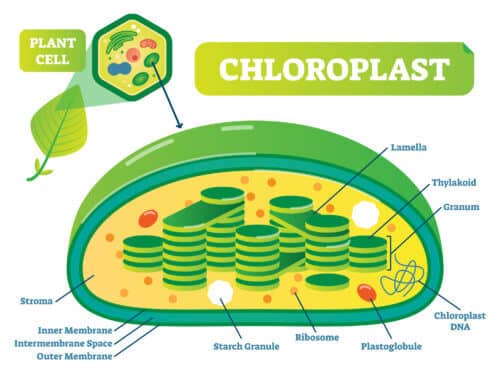For the first time: researchers harnessed the process of photosynthesis to produce various materials, in an environmentally friendly process

The photosynthesis process is used by plants to produce energy by absorbing light and breaking down water and carbon dioxide. In a new study by Prof. Yiftah Yacovi From the George S. Wise Faculty of Life Sciences, in collaboration with researchers from the University of Arizona, the team succeeded for the first time in harnessing the photosynthesis process that occurs in leaves, for the benefit of the production of fertilizers, fuels and chemicals, in a way that does not harm the quality of the environment. The revolutionary breakthrough will in the future lead to the production of different types of chemicals such as ammonia and hydrogen, without pollution, while maintaining the quality of the air we breathe.
Vocational training for algae
Hydrogen gas is currently used to produce fertilizers such as ammonia, and also as an important and non-polluting potential energy source, since burning it in electric bicycles or electric cars emits only water vapor. The team of researchers led by Prof. Yeftah Yacovi, in collaboration with Professor Kevin Redding from the University of Arizona and their students Andrey Knigin and Yuval Millard, succeeded in finding a way to attach nanometer machines to plant leaves and algae, and produce hydrogen gas using cells of microalgae.
In order to harness photosynthesis to various chemical processes, it is necessary to locate a specific point called a nanometer electrical outlet, where various enzymes that produce the desired target substances such as chemicals can be wired. The researchers located such a point, and demonstrated its activity by wiring the enzyme hydrogenase, which produces hydrogen gas. The hydrogenase enzyme was successfully engineered into the cells of a green microalgae, and during photosynthesis, thanks to the direct wiring, exclusively absorbed the electrons needed for the production of gaseous hydrogen, before they were "swallowed and disappeared" for other activities. The research was published in the leading journal Energy and Environment Science
Another step towards a green future
The findings of the innovative research, which will serve as a basis for further research in the field, is a first step in the revolution in the field of green energy and the chemical industry. Photosynthesis can now be used as a platform for the creation of renewable and clean energy and for the creation of "biological factories", capable of carrying out chemical transformations thanks to sunlight and a source of water only as power suppliers.
Thanks to the new discoveries, the researchers estimate that within 10 years it will be possible to harness the photosynthesis process to produce energy, fertilizers, fuels and various chemicals, all in a completely green way and without harming the quality of the environment.
More of the topic in Hayadan:
- Another essential part of the photosynthesis process has been revealed
- Biohackers are looking for better ways to produce plant genomes that will yield larger crops
- Researchers at Tel Aviv University have found a way to increase the yield of hydrogen from unicellular algae 5 times for the vehicles of the future
- Artificial photosynthesis to convert solar energy into chemical energy
